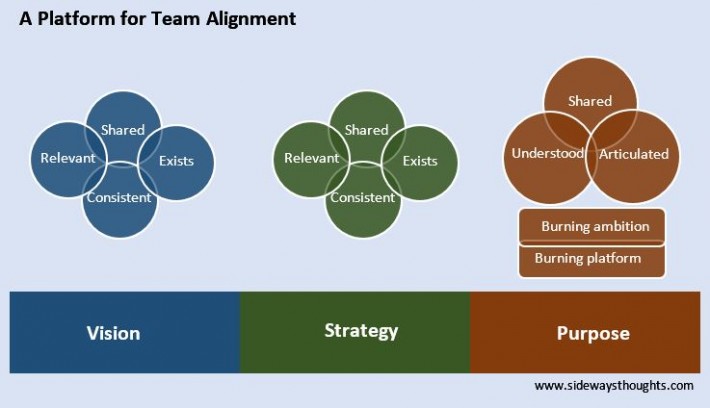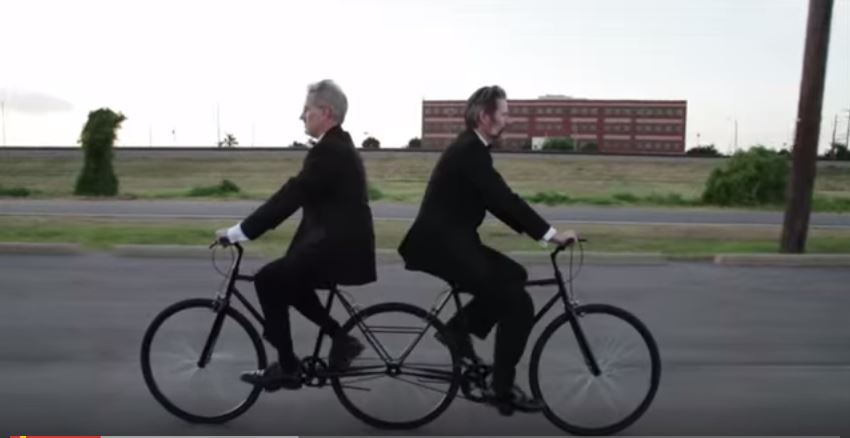Team Alignment in increasingly disruptive environments

The pushmi-pullyu is an animal with two heads, each head going in different directions. When introduced in The Story of Doctor Dolittle, the characters who saw the creature shared similar thoughts as you or I might have:
“Lord save us!” cried the duck. “How does it make up its mind?”
“It doesn’t look to me as though it had any,” said Jip, the dog.
The depiction of a creature going in two different directions can be similar to the description of teams in today’s rapidly changing context. While author Hugh Lofting wrote in 1920 that the pushmi-pullyu is long extinct, the current market environment provides fertile ground for the proliferation of misaligned teams.
The challenge of team alignment
No one sets out to have a misaligned team. Few people would raise their hands if you were to ask whether they would choose to have wasted effort, high staff turnover, or dysfunctional working relationships. And yet misaligned teams are a common occurrence in today’s working environment.
That said, team alignment is not getting any easier. Teams face challenges from increasing changes in what they do, who they are, and how they work together.
Changes in what teams do
The function of teams and skills of those in the teams is changing. As I noted in my previous post on open innovation, over 50% of occupations are predicted to be redundant by 2025. Team members are faced with a need to constantly learn new skills and even shift career paths to stay relevant. Entire industries will disappear and new industries will emerge. These changes can make it difficult to stay aligned when individuals worry about career survival.
Changes in who teams are
The composition of teams also continues to evolve. Organisational boundaries will also continue to be redefined, shaking up what used to constitute a team. Each year consultancy reports from the likes of Deloitte and KPMG highlight the continued acceleration of mergers and acquisition. Team alignment can be difficult when organisations form and reform structures in the search for new technology and competitive advantage.
Changes in how teams interact
Teams can be “always on” through automation of project management systems. While this may seem like a benefit, the large volume and rapid pace of information can also exasperate misalignment. In the past month, I have supported multi-national project teams that use systems such as Trello, Slack, Basecamp, and Asana. Information is shared through these systems as well as Google Docs, email, Skype, phone, and face-to-face. With so many communication channels in play, misalignment can quickly get out of control.
Three keys for team alignment

So how do you maintain alignment in a rapidly shifting environment? We can start with an assumption that people in teams are competent, diligent, and capable. Few people set out to be misaligned.
The challenges teams face can be complex and it is not appropriate to assume that an N-step process will sort everyone out. It is also not logical to think outcomes will be achieved by simply telling a team to be aligned, exposing their misalignment in the hopes that shame might produce a result.
Three focus areas of vision, purpose, and strategy can set a team up for alignment:
1. Vision

The vision is the light on the hill that draws the team’s attention when the fog of external ambiguity rolls in and the waves of change threaten to shake the boat. To extend the light metaphor, there are a few characteristics of vision that can help or hinder team alignment.
- Vision exists – The brightness of the light
First, there needs to be a vision. This does not always need to be some verbose, word-smithed statement. But if someone asks your team where they are going, ideally there is a consistency in their response beyond blank looks. It can be difficult to align if we do not know where we are aligning to. - Vision is shared – It is our light
There is little value in a vision if it does not draw people’s attention. The best way to ensure the vision connects with people is to include others in the journey of developing and stepping into the future state that the vision creates. Alignment is more likely if each person feels a part of where the team is going. - Vision is relevant – Maintain the light
Today’s vibrant technology start-up community is in contrast to perceived slow-changing visions of large, traditional corporations. A vision that is relegated to a poster on the wall can soon be ignored as part of the wall. A previously aligned team can become misaligned if the vision is not maintained. - Vision is consistent – Avoid continually moving the light
A constantly moving vision can be exhausting to those who chase after it. Visions might adapt to the environment, but individuals can become disillusioned and fatigued if they feel they are constantly being asked to look in new directions or if they feel their efforts towards previous directions are not acknowledged or have been wasted.
2. Strategy

There can be hundreds of ways to achieve vision. Strategy focuses individual and collective attention into specific channels of action. Similar to vision, you can check your strategy to determine if it is contributing to team alignment or misalignment.
- Strategy exists
Team members need to have a clear line of sight between the how work of their hands contributes to the vision. Without a strategy, activity is wasted on initiatives that are not supported as team members make up their own strategy or there is a lack of activity as team members flounder in a lack of focus. - Strategy is shared
A sense of control and choice is fundamental to our psychological well-being. A strategy that is created in the ivory leadership tower and inflicted upon the team can result in a passive, disengaged team. Team involvement in the process of strategy development allows the team to “opt-in” and make a conscious choice about their involvement. - Strategy is relevant
An irrelevant strategy is one that does not take into account the internal and external context in which the team operates. The team has every right to question a strategy of rapid growth in a saturated or distressed market, or leverage a value proposition without any capability to deliver. Teams can find alignment difficult if there is no evidence of rigour around the strategic planning process. - Strategy is consistent
An inconsistent strategy is a contradiction, given that strategy is designed to ensure consistency. A continuously changing strategy trains the team to initially operate in chaos and eventually become disengaged until the changing strategy wheel lands on a direction they agree with.
3. Purpose

If vision attracts your attention and strategy focuses your attention, purpose is the fuel source that motivates your action. Purpose can be described as the fire under your butt or the fire in your heart. Another description of purpose is as your burning platform or burning ambition.
A burning platform can be useful if you want to quickly align a team. Action movies use a zombie apocalypse, an earth-destroying meteor, or a giant lizard coming out of the sea. The organisational equivalent can be the threat of staff reductions, competitive threats, or large-scale changes in consumer sentiment. A team’s evolutionary threat response can be an easy lever to use, but operating in continual survival mode is not sustainable.
A burning ambition casts the purpose towards the positive future state the individual and team wants to create. A burning ambition is more likely to result in innovation and new ideas as the team is less focused on fear-based survival.
To have team alignment, the purpose of either a burning platform or burning ambition needs to be shared, understood and articulated between the individual and the team. This ideally occurs through a high-trust conversation.
At the individual level, each person has a purpose in life, even if it is not conscious or articulated. A personal purpose of addressing challenges facing humanity can be at odds with an organisation purpose of making as much money as possible. An individual who is focused on survival may not be aligned with a team that is creating something new in the market.
Check your alignment
Organisations, and society as a whole, are facing significant challenges and have access to incredible opportunities. The hard reality is that we cannot afford to be misaligned if corporations are to be competitive and humanity is to prosper. Team alignment cannot be assumed in our increasing complex environments, but it is also very possible to realise if we are intentional about our approach to vision, strategy, and purpose.
Much like going into a mechanic for an alignment of your car, team alignment can require a tune up session. Practically, this is a series of conversations to develop, share, understand, and execute against the team vision, strategy and purpose.
It can help to have these conversations facilitated. I will declare a bias in my current role as a management consultant as one who facilitates such conversations. An external trained facilitator is the “guide on the side”, allowing the leader to be a participant and challenging habits and assumptions without having a vested interest in the outcomes.
Whether you use a facilitator to engage your team or ask the questions yourself, there is value in ensuring you are clear on a relevant and shared vision, you have a consistent strategy to focus your attention, and the purpose of the individuals are aligned with the purpose of the team.
Please feel free to share using the social links below if you feel there are modern day pushmi-pullu teams that could benefit from this post. If you are experiencing your own pushmi-pullu, I encourage you to bring someone in or have the conversation with your team yourself about vision, strategy, and purpose.

